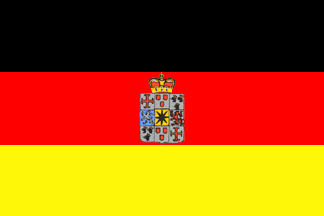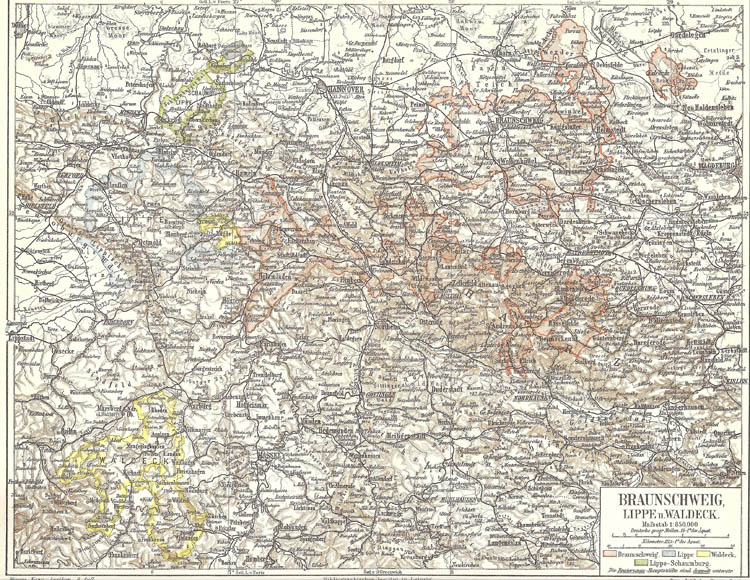



(1813-1871)
The Principality of Waldeck-Pyrmont, a German state since 1625, was a member state of the Germanic Confederation from 1815 to 1866. After the Prussian-Austrian War, it became a member state of the North German Confederation in 1867 and it became a member state of the German Empire in 1871.
Waldeck-Pyrmont consisted of two separated areas. The smaller of the two, Pyrmont, was a mere 26 square miles. Waldeck-Pyrmont had one vote in the Bundesrat and one in the Reichstag. Waldeck-Pyrmont was a hereditary constitutional monarchy whose parliament had one chamber known as the Landtag. There were fifteen members of the Landtag, three of whom represented Pyrmont.
Waldeck-Pyrmont was governed by Prussia as the result of a treaty started in 1867 and renewed every 10 years with the proviso that it could be canceled on two-year' notice. A Prussian appointed “Landesdirector” conducted the government in the name of the prince. The officials of the State took an oath of allegiance to the King of Prussia. The prince of Waldeck reserved very few rights and was restricted to paying off his debt that was accruing with an interest rate of 32 percent.
Consuls were maintained for trade with Belgium, Brazil, Ecuador, Great Britain, Portugal, France, Italy, Mexico, Rumanian, Russia, Serbia, Netherlands, Paraguay, Austria-Hungary, Prussia, Switzerland, and Turkey.
The capital was Arolsen. The area was 433 square miles and the population in 1914 was 63,000. The population was almost wholly Protestant.
(Kaiserliches Statistisches Amt, 1914)